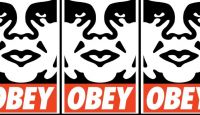Google is moving to Moscow! Not really. But Mr. Sergey Brin, the founder of Google, was born in Moscow. How does Russia ensure that Sergey 2.0 will stay in Moscow – and not flee to Mountain View? You should care. Russia’s economy is over leveraged in the energy market. When oil prices drop, the Kremlin will be all the more desperate to do unwise deals for arms, among other things, to fill its coffers at the risk of longer term Russian — and American — stability. To keep Sergey 2.0, the Kremlin should take the following steps.
1. Encourage entrepreneurial risk taking
Who likes failing? Nobody does. But failing is a necessary part of being an entrepreneur in the tech space, and can be like compost for future successes. Numerous players, including Steve Jobs, failed miserably before they succeeded. He started Apple, was kicked out, started NeXT, that failed horribly, and created America’s largest capitalized company. There is a lesson to be learned from success stories like Apple for the Kremlin, whose oil and natural gas sales accounted for almost 70% of exports in 2013.
By failing to diversity its economic portfolio into the technology sector, Russia’s economy remains overly beholden to the volatile energy market. When oil prices drop, as they have recently, the Russian ruble suffers. This also makes the Russian economy subservient to good short term but bad long-term deals. To make Russia more economically robust in the long term, which ensures that America has a stable trading partner (Ford currently has a factory in Saint Petersburg), Kremlin policy makers should encourage more entrepreneurial risk taking among its inventive youth. This will make it more likely that a Russian version of Google will arise, employing numerous Russians and giving the country an alternative revenue source alternative to energy. This means going backwards and dismantling some of the centralized state control apparatus — whether under the Czar or under the Bolsheviks — that dominates Russia’s history.
Going backwards isn’t always bad. As any tech entrepreneur will tell you, including Mr. Jobs if he were alive, oftentimes you need to go backwards before you can leap forward. That’s why those who risk more get more. But most cultures – including Russian – look upon failing as being weak. While I am a California boy hailing from the City of Angels (Los Angeles), I have been living in New York City for twelve years now. And I can tell you first hand that the mentality here is less failure forgiving than in my Los Angeles birthplace, where, according to artists like Moby, there is “freedom to fail.” This explains why most of the top 50 venture backed companies in 2011 were located in California.
Like Californians, Russians are inventive, too. That’s why they were first to the moon, are the top rated chess players in the world, and are number 14 on Bloomberg’s list of most innovative countries in the world. But, as MIT points out, there is a difference between inventing and innovating. It’s one thing to invent something, like new ways of training for hockey, as recounted in Red Army, a documentary about the Soviet Union’s invincible Red Army hockey team. It’s another to take that invention and make it an innovation by packaging and marketing as a product that will disrupt the market. Part of the reason why there isn’t more innovation – as opposed to just invention – in Russia is the fear of commercial failure, as I have seen with Russian clients.
To temper this fear, Kremlin policy makers should encourage schools to teach Russian children about the benefits of trial and error so that they know that the risky path less taken isn’t necessarily the wrong one.
Otherwise, the world wouldn’t have Apple, Microsoft, or Google.
2. Create tech incubators
Some say “isolation is required” for creativity to flourish, as the famed Russian physicist Isaac Asimov says in his essay On Creativity. Others say that creativity is collaborative, as recounted in The Innovators by Walter Isaacson in telling about the starting of companies like Texas Instruments by a team of mavericks. Like with most things, the truth lies somewhere between these two poles.
Even Mr. Asimov says that cross-fertilization of ideas happens best when creative types are able to collaborate in an environment that encourages “ease, relaxation, and a general sense of permissiveness.” That’s because “the world in general disapproves of creativity, and to be creative in public is particularly bad. Even to speculate in public is rather worrisome. The individuals must, therefore, have the feeling that the others won’t object.” This means Russia needs to develop incubators and co-working spaces where collaborative creativity can thrive.
The benefits of such collaborative creativity can be seen throughout the United States. It can be seen in California or even New York skate parks, where kids make up new moves on their own, but try them in front of others to receive applause, pointers, or thumbs down. It can also be seen in tech incubators and co-working spaces located in both states – and in places like Cambridge, Massachusetts – where start-up companies work on their own inventions, but then can have practice pitch sessions in preparation for venture capital showdowns with other start-ups.
By mixing the collaborative and individualistic aspects of creativity, these innovators are able to get better feed back on their minimum viable products — a sample of the larger product to test — in preparation for either venture capital pitches or launching into the marketplace. This type of feedback is impossible in pure isolation. It would be like me testing out one of my new novels on a maple tree in Maine. The tree makes for an obedient audience, but I don’t want that when trying out new work. I want the good, bad, and ugly comments – stomach punches! – so that I can perfect my work for the real world.
The same type of culture can be encouraged in Russia by funding incubators or shared work spaces where entrepreneurs can find the environment they need to prosper.
3. Keep public hands off private intellectual property
Some products are produced and developed with government – taxpayer — money, and others with private money. To the extent I am developing a product using public money, then it is to be expected that the government – taxpayers – will own the the fruits of my labor. In that case, public copying isn’t theft. If, however, I receive private money for my development project, then the government should have less of a stake in the pot of intellectual property gold at the end of my entrepreneurial rainbow. In such a case, public copying is theft.
This risk reward relationship is one of the main drivers of innovation. Of course, some creators will make things regardless of the economic benefit. But these folks are usually hobbyists, not professionals. Those who seek to take a new product to market with their own — or borrowed private — money will expect to receive the financial spoils, and to have the state enforce their intellectual property rights, whether they be copyright, patent, or trademark. To the extent that the Kremlin is able to take away this pot of gold at the end of the rainbow from law-abiding citizens — not tax cheats — as a form of redistribution or retribution for challenging centralized power, then Russians like Mr. Brin will continue to flee to the West. This will further leverage the Russian economy into energy, and make job creating private tech innovation a pipe dream.
However, if the Kremlin makes the next Sergey Brin firmly confident that the gold at the end of his tech rainbow will not be seized, or otherwise taxed at 99%, then tech innovation will boom in Russia.
4. Ensure legal stability
Finally, there needs to be regulatory stability in Russia. This means that before I launch a new tech gadget product, the law might be settled concerning the patentability of a piece of hardware I developed, or copyrightability of source code. However, if the government is able to be lobbied by a larger competitor so that the law can swiftly change via regulatory diktat, smaller tech entreprenerus can no longer rely on the law being principled, which is what many smaller entrepreneurs in the U.S. feel about the legal system. Further regulatory uncertainty is created — which isn’t not good.
Such uncertainty is one of the biggest obstacles to creating and fostering an environment that encourages innovation. Sudden regulatory changes create a new factor that may go wrong after launching a product, or in the process of research and development. These types of regulatory changes also add another barrier to entry. In the United States, it makes it more costly for products to be developed by cash strapped start-ups without having expensive regulatory lobbying might in Washington D.C. so as to protect against well-connected competitors. This explains why so many companies from Silicon Valley now have lobbyists in the Capitol, whereas they didn’t before. The Kremlin can learn from Washington D.C. what to do — and not do — to enhance tech innovation in Russia.
Don’t be surprised to see a Silicon Moscow in the coming years. This will be beneficial to Americans since it will make it less likely that the Kremlin will do short term desperate arms deals that will be injurious to longer term Russian — and world wide — security and stability. It will also give American companies another fertile market in which to do business. And yet to get to this tech motherland, Russia will need to create the right type of environment. If it does, watch out for Sergey Brin 2.0 in Moscow.









